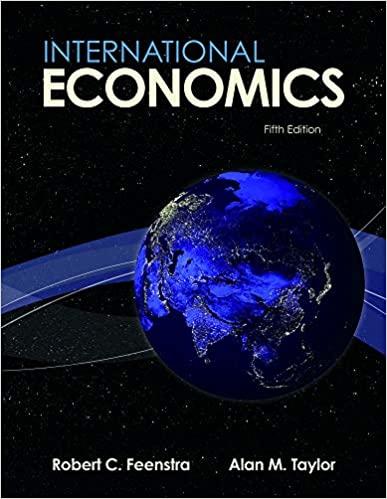Consider two countries, Opes and Paupria. These countries produce identical goods. Suppose that Paupria borrows some amount
Question:
Consider two countries, Opes and Paupria. These countries produce identical goods. Suppose that Paupria borrows some amount of funds from Opes at the world interest rate. The funds will be repaid in the subsequent period.
a. What happens to spending in Opes and Paupria? Explain briefly.
b. What happens to the demand for goods produced in Opes? The demand for goods produced in Paupria?
c. What happens to the trade balance in Opes and Paupria in the first period? What happens to the trade balance between period 1 and period 2?
d. Given your previous answers, what happens to the real exchange rate? Illustrate the relationship between the trade balance and the real exchange rate for Opes. Plot the trade balance and real exchange rate in the first and second periods.
e. Now assume that consumers in each country prefer to spend a higher fraction of their income on home goods. If Paupria receives funds from Opes, what happens to spending on Paupria’s goods? Spending on Opes’s goods? Explain why your answer differs from (a).
f. Given your answer to (e), what happens to the demand for goods produced in Opes and Paupria? What does this imply about the relative prices of goods in each country?
g. Under the scenario described in (e), what happens to the trade balance in Opes and Paupria in the first period? Illustrate the relationship between the trade balance and the real exchange rate for Opes. Plot the trade balance and real exchange rate in the first and second periods.
Step by Step Answer:






